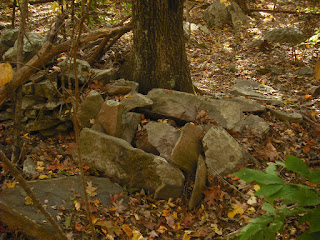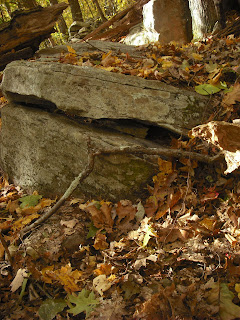Although this landscape is a jumble of rocks, some propped or perched boulders are evident.
Here, surrounded by blooming brittlebush, is the only stone row I saw at Joshua Tree. It goes past three large boulders.
Continuing on, I see more structures, particularly propped boulders.
Finally, the oasis.
Under this boulder are many smaller rocks. The grass was probably left by some nesting animal.
The oasis water is inviting on a hot day.
Outside the oasis, a large split boulder. These are rare here. The Cahuilla did not have access to metal tools until 1840, and by 1850 were on reservations. They did not camp at the oases, because the California palms are very flammable.
I have always noted that structures are along trails. Presumably, the park trails were adapted from the old Indian trails, since they go somewhere important, usually to water. This landscape contains perched and propped boulders and effigies, but very few split boulders or stone rows. I think the Indians created propped and perched boulders for their own purposes, and before the arrival of settlers. Many of the stone rows, split boulders and cairns we see in New England were created by field clearing, boulder quarrying and wall building after the arrival of settlers.
On the way back to the parking lot, I notice many stones tossed on top of a large rock. This rock is too tall for the stones to have rolled or bounced up there. The lower rocks don't have these small stones on them, either. These may be donations, or mementos tossed there by hikers.
























































